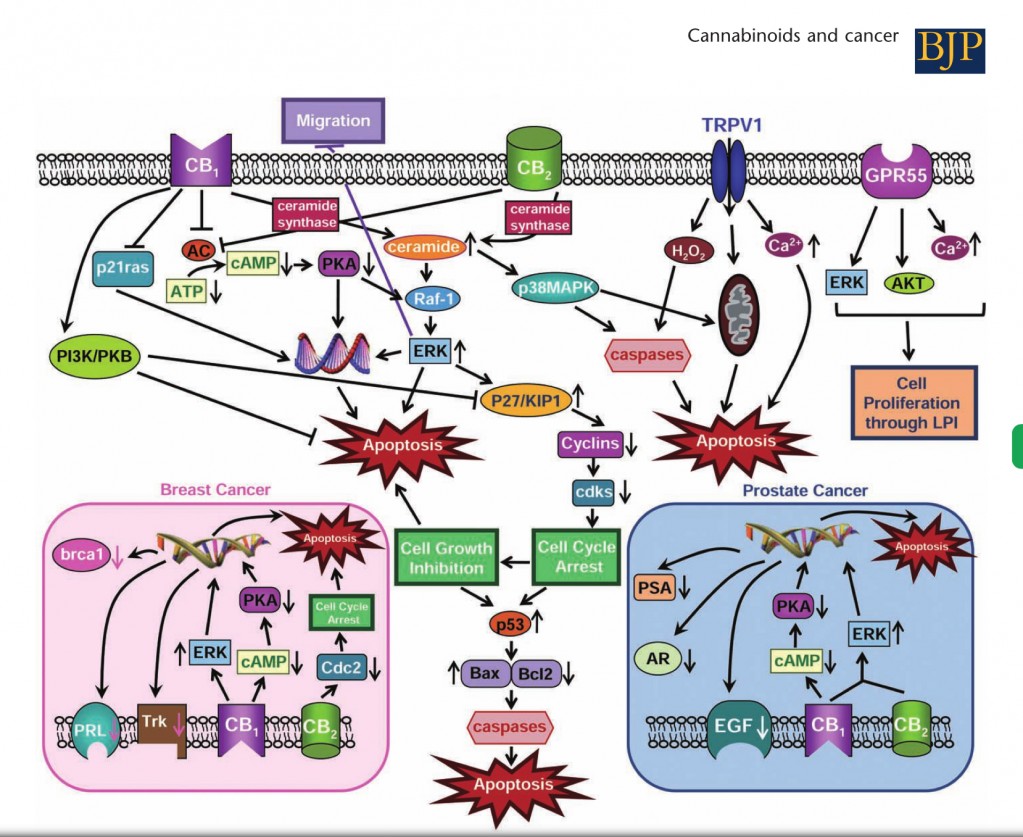- Thread starter
- #121
What's a Bio Bomb?
Taking CCO orally may be easier for everyone, but the reality is that only about 20% or less of the medication is going to survive the catastrophic trip through the stomach acids and the aggressive enzymes in the liver, the first stop after that grueling trip through the stomach.
The answer to this challenge is to make the oil more bioavailable and create an atmosphere of Competitive Inhibition. Let's look at how to make that oil easier to absorb.
The Bio Bomb
This is based on the Canna-Budwig protocol, which combines CCO with liquid lecithin and cottage cheese. Many thanks to Cajun for sharing it with us on his thread.
In his words:
"This method rivals dosing by IV, intravenously. It is to cancer what a difibulator is to a heart attack"
The THC will hit the system immediately and with great potency. Be very cautious about dosing. This warning should not be taken lightly.
Dilute 1gm of CCO with 20gm of non-lignan flaxseed oil
* Other long-chain fatty acids can be substituted, i.e. extra virgin olive, grape seed.
* For liver cancer go with the medium-chained coconut oil.
*Avoid flaxseed if treating estrogen-based cancer, such as some breast cancers.
Add 3 more TBS of flaxseed oil and 1 TBS of liquid sunflower lecithin. Mix thoroughly.
Refrigerate for 24 hours and it's ready to use.
If filling capsules, it's fairly standard to use size 00 capsules.
If this mix is too potent, go with a 1:50 CCO:carrier oil ratio.
EDIT:We have since reworked this formulation into something we felt was easier to dose with control.
BioBomb Capsules - Continuing rework
20:1 = 1 cc CCO + 16 cc carrier oil + 4 cc lecithin
1000 mg cannabinoids /21 capsules = 47 mg cannabinoids per capsule.
10:1 = 1 cc CCO + 8 cc carrier oil + 2 cc lecithin
1000 mg /11 capsules = 91 mg cannabinoids per capsule
5:1 = 1 cc CCO + 4 cc carrier oil + 1 cc lecithin
1000 mg/6 capsules = 167 mg cannabinoids per capsule.
Some tips from panacea. I cleaned you up and formatted the post panacea. You're welcome.

"A couple little suggestions to save you some trial & error as what I went through.
- Warm up the CCO with a 2-5 mls of food grade alcohol to thin it out you will find it much easier to thoroughly mix with the flax.
- I also found slowly& lowly(lol not sure if that is a word) warming up the lecithin (since it is so Damn sticky) so it will liquify then add to the 3 tbs(or 45 mls or grams)of flaxseed and mix. * Find out if he was using granulated lecithin here.
- You can also add a tad of alcohol to this if need to. When initially trying this I had problems with the flax and lecithin separating until I started adding a touch of food grade alcohol(I used absolute vodka). I would fill the caps up then after a little bit I would notice a very foamy substance on to the top of the capsule and the flax on the bottom making for a very inconsistent mix.
- I also like using a 60 ml syringe when getting ready to fill caps since it saves time from refilling. But hey each for their own.
Someone may find a better way of doing this but this is what work for me."
Do not substitute powdered or granular lecithin for liquid.
Lecithin sold as a diet supplement generally comes in two forms. Dry lecithin is fatty acids known as phospholipids. Phospholipids are part of every cell in your body, so getting them in your diet seems critical. Liquid lecithin, or lecithin oil, has additional glycophospholipids that do not dry out into a powder.
A phospholipid has phosphate in its molecule.
A glycophospholipid is any phospholipid that contains both phosphate and carbohydrate as integral structural components.
There are a few things here I still need to flesh out, such as what the refrigeration accomplishes. Somewhere in the back of my brain I have that information stored away, but it's 1:30 in the morning and with no sativa influence to fuel my crazy night study hours my body's going to insist I start getting more sleep.
If I say I'm headed to bed now, maybe I'll get there by the time lights go out in my tents at 4AM.
It's now 2:20 and I'm almost done.
MagicJim, I loaded this one in for you, my magical companion. I know how much you love your oil, and this will make it that much more potent for you. See? I was thinking about you all day. You can order the liquid lecithin from the rain forest site. I paid $8.49 for 16 oz. You may be able to find it locally.
You can order the liquid lecithin from the rain forest site. I paid $8.49 for 16 oz. You may be able to find it locally.
I'm done for the night. Turning out the lights and heading for the sheets. Tomorrow's another wonderful opportunity to learn more.

Taking CCO orally may be easier for everyone, but the reality is that only about 20% or less of the medication is going to survive the catastrophic trip through the stomach acids and the aggressive enzymes in the liver, the first stop after that grueling trip through the stomach.
The answer to this challenge is to make the oil more bioavailable and create an atmosphere of Competitive Inhibition. Let's look at how to make that oil easier to absorb.
The Bio Bomb
This is based on the Canna-Budwig protocol, which combines CCO with liquid lecithin and cottage cheese. Many thanks to Cajun for sharing it with us on his thread.

In his words:
"This method rivals dosing by IV, intravenously. It is to cancer what a difibulator is to a heart attack"
The THC will hit the system immediately and with great potency. Be very cautious about dosing. This warning should not be taken lightly.
Dilute 1gm of CCO with 20gm of non-lignan flaxseed oil
* Other long-chain fatty acids can be substituted, i.e. extra virgin olive, grape seed.
* For liver cancer go with the medium-chained coconut oil.
*Avoid flaxseed if treating estrogen-based cancer, such as some breast cancers.
Add 3 more TBS of flaxseed oil and 1 TBS of liquid sunflower lecithin. Mix thoroughly.
Refrigerate for 24 hours and it's ready to use.
If filling capsules, it's fairly standard to use size 00 capsules.
If this mix is too potent, go with a 1:50 CCO:carrier oil ratio.
**********
EDIT:We have since reworked this formulation into something we felt was easier to dose with control.
BioBomb Capsules - Continuing rework
20:1 = 1 cc CCO + 16 cc carrier oil + 4 cc lecithin
1000 mg cannabinoids /21 capsules = 47 mg cannabinoids per capsule.
10:1 = 1 cc CCO + 8 cc carrier oil + 2 cc lecithin
1000 mg /11 capsules = 91 mg cannabinoids per capsule
5:1 = 1 cc CCO + 4 cc carrier oil + 1 cc lecithin
1000 mg/6 capsules = 167 mg cannabinoids per capsule.
Some tips from panacea. I cleaned you up and formatted the post panacea. You're welcome.


"A couple little suggestions to save you some trial & error as what I went through.
- Warm up the CCO with a 2-5 mls of food grade alcohol to thin it out you will find it much easier to thoroughly mix with the flax.
- I also found slowly& lowly(lol not sure if that is a word) warming up the lecithin (since it is so Damn sticky) so it will liquify then add to the 3 tbs(or 45 mls or grams)of flaxseed and mix. * Find out if he was using granulated lecithin here.
- You can also add a tad of alcohol to this if need to. When initially trying this I had problems with the flax and lecithin separating until I started adding a touch of food grade alcohol(I used absolute vodka). I would fill the caps up then after a little bit I would notice a very foamy substance on to the top of the capsule and the flax on the bottom making for a very inconsistent mix.
- I also like using a 60 ml syringe when getting ready to fill caps since it saves time from refilling. But hey each for their own.
Someone may find a better way of doing this but this is what work for me."
**********
Do not substitute powdered or granular lecithin for liquid.
Lecithin sold as a diet supplement generally comes in two forms. Dry lecithin is fatty acids known as phospholipids. Phospholipids are part of every cell in your body, so getting them in your diet seems critical. Liquid lecithin, or lecithin oil, has additional glycophospholipids that do not dry out into a powder.
A phospholipid has phosphate in its molecule.
A glycophospholipid is any phospholipid that contains both phosphate and carbohydrate as integral structural components.
There are a few things here I still need to flesh out, such as what the refrigeration accomplishes. Somewhere in the back of my brain I have that information stored away, but it's 1:30 in the morning and with no sativa influence to fuel my crazy night study hours my body's going to insist I start getting more sleep.

If I say I'm headed to bed now, maybe I'll get there by the time lights go out in my tents at 4AM.

It's now 2:20 and I'm almost done.

MagicJim, I loaded this one in for you, my magical companion. I know how much you love your oil, and this will make it that much more potent for you. See? I was thinking about you all day.
 You can order the liquid lecithin from the rain forest site. I paid $8.49 for 16 oz. You may be able to find it locally.
You can order the liquid lecithin from the rain forest site. I paid $8.49 for 16 oz. You may be able to find it locally.I'm done for the night. Turning out the lights and heading for the sheets. Tomorrow's another wonderful opportunity to learn more.














 Please, feel free to share your adventures in learning how to dose yourself as well as some of the more fun times. I remember the evening over the holidays when Cajun made himself little bio bomb chocolates, ate two and went to town. Hahaha! Ahhh.... The memories.
Please, feel free to share your adventures in learning how to dose yourself as well as some of the more fun times. I remember the evening over the holidays when Cajun made himself little bio bomb chocolates, ate two and went to town. Hahaha! Ahhh.... The memories. 
 Deep breath girl, it's only temporary.
Deep breath girl, it's only temporary.